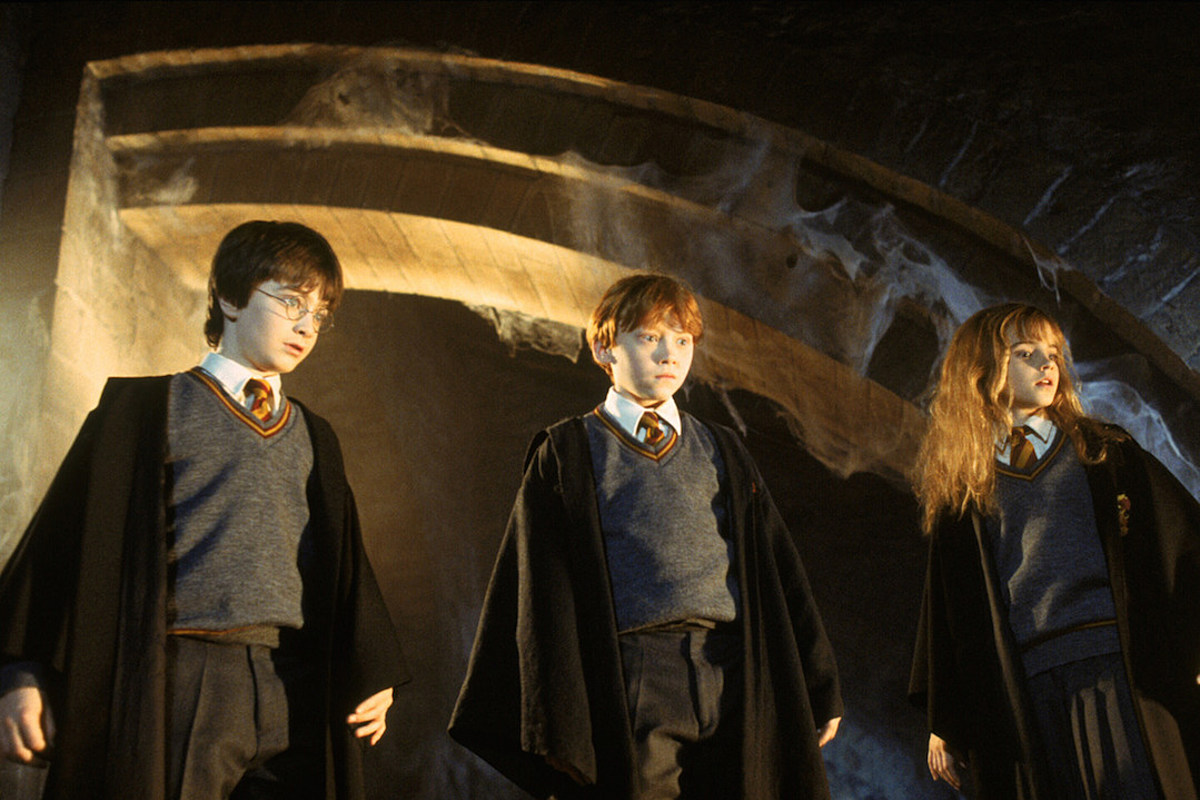by J. K. Rowling
Reviewed by Eve

original cover for the American edition – where the title is called the Sorcerer’s Stone
In the book Harry Potter and the Philosopher’s Stone (also called Harry Potter and the Sorcerer’s Stone in the American version), Harry Potter, an orphan who lives with his aunt and uncle, discovers a world of magic. When Harry turned 11, he received an acceptance letter from a magic school named Hogwarts. Soon after he starts attending Hogwarts, Harry discovers that Voldemort, the dark wizard who murdered Harry’s parents, is back.
The Philosopher’s Stone is a red gem that makes the holder immortal. Voldemort envies immorality. He’s so crude that he possesses a professor named Quirrell to steal the stone, since it is buried at Hogwarts. Harry befriends Ron and Hermione as he becomes more desperate to catch the culprit. They prevent Voldemort from winning by confronting him in the chamber where the stone was hidden. All the teachers in the end decide that it would be better to destroy the stone than to keep it.
One thing I liked was that the story was very original. Some of the obstacles were very strange, such as a mountain troll stuck in a bathroom, or a three headed dog that falls asleep to music. But the way the protagonists solved them was what pulled me closer. Harry actually sticks his wand up the troll’s nose, while Ron bonks it on the head with a bat which I thought was very brave of them. Hermione somehow had the guts to pick up a harp and play it, though she couldn’t really play, to walk past the vicious dog.
Another thing I liked was that the author included so many eye-catching details, that we could have lived inside of her world. I thought the details were very specific, mostly because many authors, such as C.S. Lewis, described spells as “a flick of the wand,” more so than taking the time to invent new spells and creatures. The author used many Latin words such as lumen, which means light, and revived them into spells such as lumos. Though there are many books and stories about magical worlds, J.K. Rowling really developed the myth about wands, wizards and witches, by creating an entirely new society that brings imagination to a whole other level.
Overall I really liked this book. Some kids start reading it at the early age of 7, while the majority starts somewhere around 6th grade. It is very fun and enchanting to read, for there is a surprise every couple of pages. You just want to keep on reading to find out how the characters resolve each problem and what will happen in the end.
See my review of the complete Harry Potter series here.

